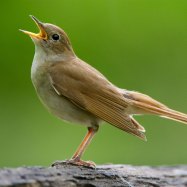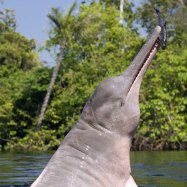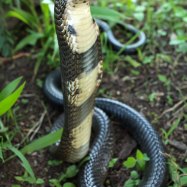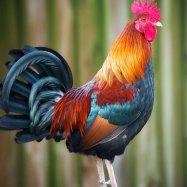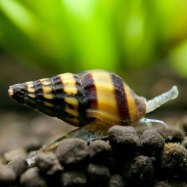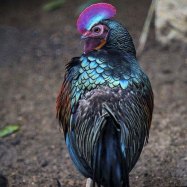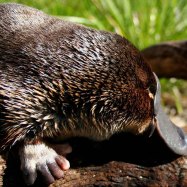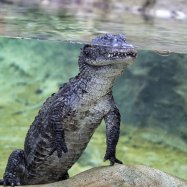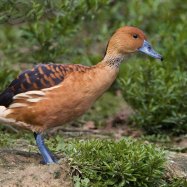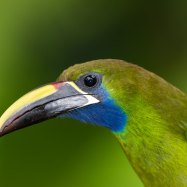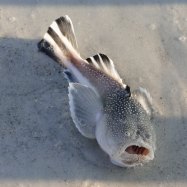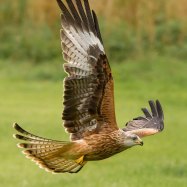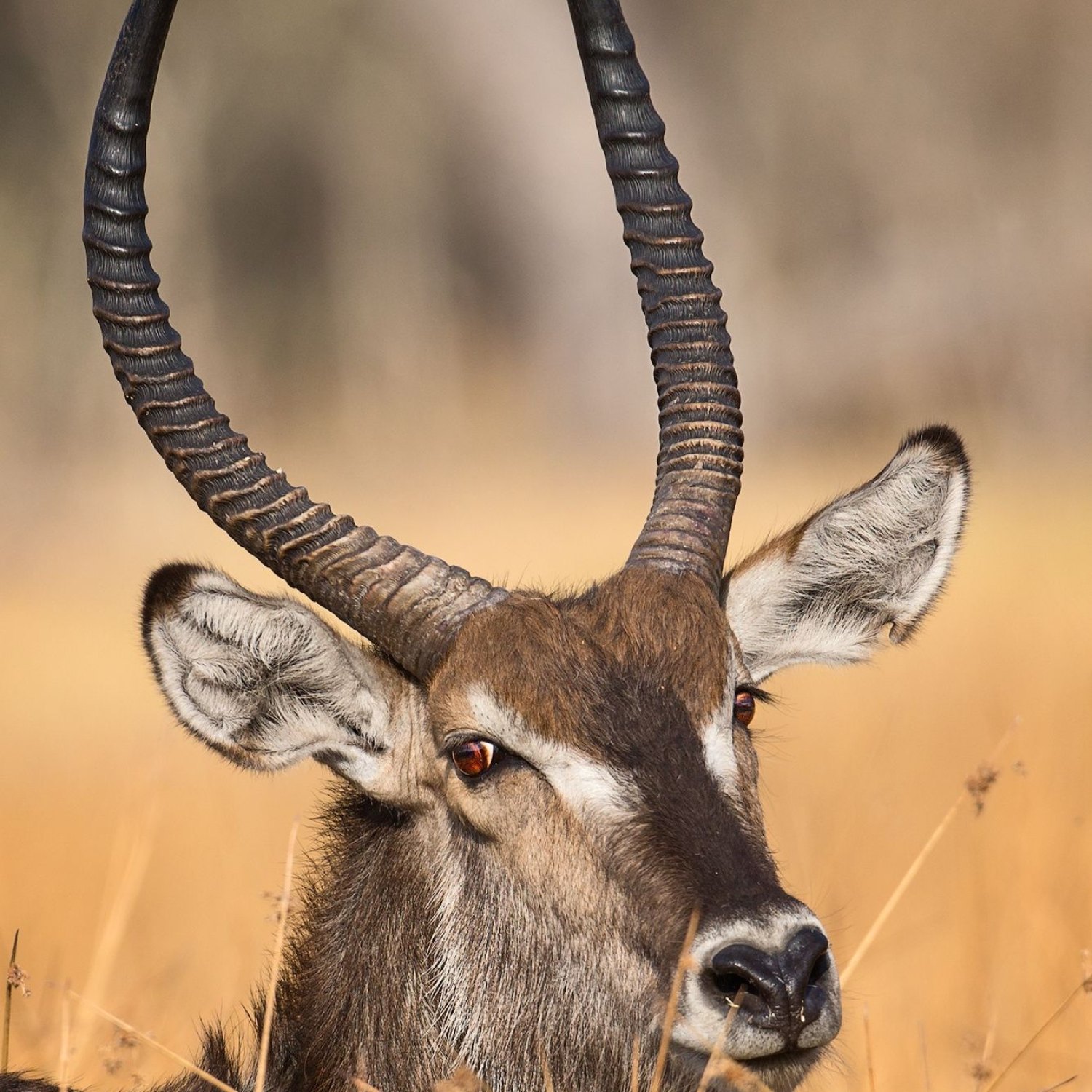
Waterbuck
140-230 cm
Waterbuck is a majestic antelope found in Eastern and Southern Africa. With a length of 140-230 cm and a large, robust body, it is an impressive sight to behold. Belonging to the Bovidae family, the Waterbuck is known for its shaggy coat and distinctive white ring on its rump. Its name comes from its love for water, as it is often seen grazing near rivers and lakes. Next time you visit Africa, keep an eye out for this beautiful creature. #Waterbuck #AfricanAnimals #Bovidae
Animal Details Summary:
Common Name: Waterbuck
Kingdom: Animalia
Habitat: Grasslands, savannas, and floodplains near lakes, rivers, and swamps
The Magnificent Waterbuck: Adapting to Life in the African Savanna
The African savanna is a harsh and unforgiving landscape, with scorching temperatures, limited resources, and fierce predators. Yet, amidst this challenging environment, one animal stands tall and thrives – the waterbuck. With its majestic appearance and unique adaptations, the waterbuck is a true survivor in the wild. In this article, we will delve into the world of the waterbuck and uncover its remarkable features and ways of life Waterbuck.The Waterbuck Species and Its Habitat
The scientific name of waterbuck is Kobus ellipsiprymnus, with "Kobus" being the genus and "ellipsiprymnus" being the species. However, it is commonly known as the waterbuck, owing to its preference for living near water sources. Waterbuck are large antelopes that are found in Sub-Saharan Africa, with their range extending from countries such as Chad, Sudan, and Ethiopia in the east to Namibia, Botswana, and Mozambique in the south. As their name suggests, they are typically found near water sources, such as lakes, rivers, and swamps, in grasslands, savannas, and floodplains.The Family and Classification of Waterbuck
Waterbuck belongs to the animal kingdom, specifically the phylum Chordata. Within the Chordata, they belong to the class Mammalia, which includes all types of mammals such as humans, elephants, and whales. Waterbuck are also part of the order Artiodactyla, which consists of even-toed, hooved mammals such as antelopes, pigs, and cattle. The family to which waterbuck belong is called Bovidae, which includes over 140 species of ruminants like goats, sheep, and buffalo.The Physical Features of Waterbuck
The waterbuck is a large and robust animal, with a body length ranging from 140-230 cm and a height of 120-145 cm Woolly Aphids. They are also quite heavy, weighing between 160-240 kg. As such, they are one of the larger antelope species in Africa. Waterbuck have a distinctive appearance, with dark brown to reddish-brown fur, which appears almost black when wet. They also have a white "bib" on their chest and a white ring around their tail, making them easily recognizable.But perhaps the most striking feature of waterbuck is their long, lyre-shaped horns that spiral back and slightly upwards. Male waterbuck, also known as bulls, have larger and thicker horns than females, although both sexes have horns. These horns are used for defense against predators, such as lions, hyenas, and leopards, as well as for fighting other males during the mating season.
The Adaptations of Waterbuck
Waterbuck have evolved several unique adaptations that allow them to survive and thrive in the African savanna. One of their most significant adaptations is their ability to conserve water. As mentioned earlier, waterbuck are found near water sources, and they take full advantage of this by limiting their movement and only venturing out to graze during the cooler hours of the day.Furthermore, waterbuck have an efficient digestive system that allows them to extract as much water as possible from their food. They also have the ability to re-absorb water from their feces, reducing their need for water even further.
Another remarkable adaptation of waterbuck is their dark coloration. This dark coat helps them blend in with their surroundings, making them less visible to predators. This is especially helpful during the dry season when the grass is also dry and brown.
Apart from their physical adaptations, waterbuck are also very social animals, living in herds that can number up to 30 individuals. This social structure provides them with protection against predators, and they also communicate through loud, low-pitched grunts.
The Feeding Behavior of Waterbuck
Waterbuck are primarily herbivorous, meaning they eat only plants. They are selective feeders and have a specialized diet consisting of grasses, shrubs, and herbs. They are also known to browse on leaves and fruits, especially during the dry season when food is scarce.These animals graze mostly during the early morning and late afternoon when temperatures are cooler. This behavior helps them conserve energy and water, as they do not need to expend as much effort to find food when the heat is at its peak.
The Role of Waterbuck in the Ecosystem
Waterbuck play an important role in the African savanna ecosystem. As herbivores, they help in maintaining the balance of plant populations through grazing. By controlling the amount of vegetation in a particular area, they prevent overgrazing in some areas, allowing for new plants to grow and provide food for other animals.They are also a source of food for many predators, such as lions, cheetahs, and wild dogs. Thus, they contribute to the natural food chain, ensuring that the ecosystem remains in balance.
The Conservation Status of Waterbuck
Despite their large numbers and wide range, waterbuck face certain conservation challenges, particularly from habitat loss and poaching. As human populations expand, their natural habitats are being destroyed for agricultural and urban development.Moreover, waterbuck are hunted for their meat, fur, and horns. In some areas, they are also considered pests and are culled to protect crops and livestock. While their populations are still relatively stable, it is important to monitor and manage their numbers to ensure their survival in the wild.
In Conclusion
In conclusion, the waterbuck is a magnificent and fascinating animal that has thrived in the African savanna for centuries. With their unique adaptations, social behavior, and essential role in the ecosystem, they are truly one of the iconic species of the African wilderness.As we continue to appreciate and learn more about these animals, it is crucial to also take steps to protect and conserve their habitats. By doing so, we can ensure that future generations will continue to marvel at the beauty and resilience of the waterbuck in its natural habitat.

Waterbuck
Animal Details Waterbuck - Scientific Name: Kobus ellipsiprymnus
- Category: Animals W
- Scientific Name: Kobus ellipsiprymnus
- Common Name: Waterbuck
- Kingdom: Animalia
- Phylum: Chordata
- Class: Mammalia
- Order: Artiodactyla
- Family: Bovidae
- Habitat: Grasslands, savannas, and floodplains near lakes, rivers, and swamps
- Feeding Method: Herbivorous
- Geographical Distribution: Sub-Saharan Africa
- Country of Origin: Several countries in Africa
- Location: Eastern and Southern Africa
- Animal Coloration: Dark brown to reddish-brown
- Body Shape: Large and robust
- Length: 140-230 cm
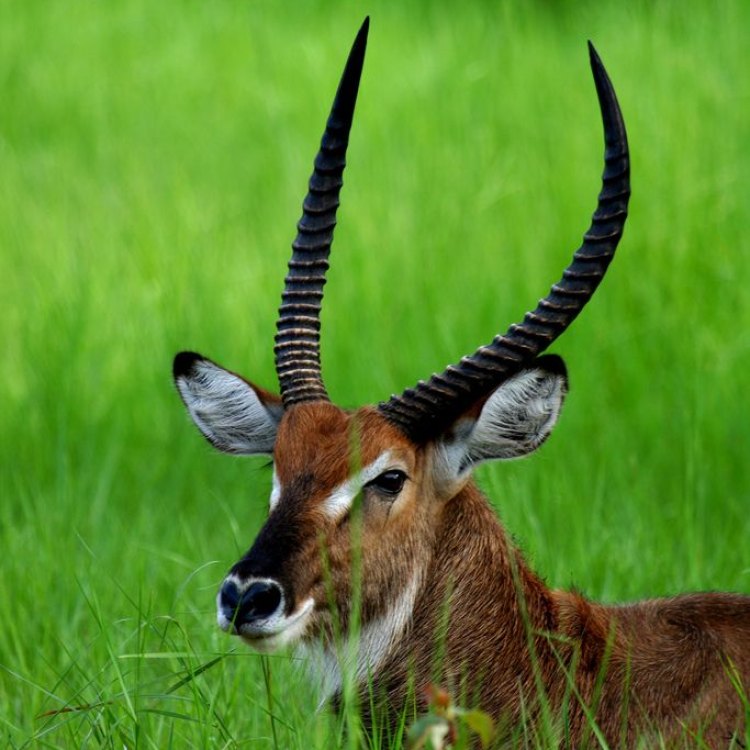
Waterbuck
- Adult Size: 140-230 cm in length, 120-150 cm in height, and weigh 200-300 kg
- Average Lifespan: 10-15 years
- Reproduction: Sexual
- Reproductive Behavior: Polygynous
- Sound or Call: Loud roaring or bellowing
- Migration Pattern: Non-migratory
- Social Groups: Males form bachelor herds, females and young form herds
- Behavior: Territorial and aggressive towards predators
- Threats: Habitat loss and hunting
- Conservation Status: Least Concern
- Impact on Ecosystem: Important grazers and seed dispersers
- Human Use: Hunted for meat and sport
- Distinctive Features: Long, forward-curved horns and a white ring on the rump
- Interesting Facts: Waterbuck can secrete a strong-smelling substance to deter predators
- Predator: Lions, leopards, hyenas, and crocodiles
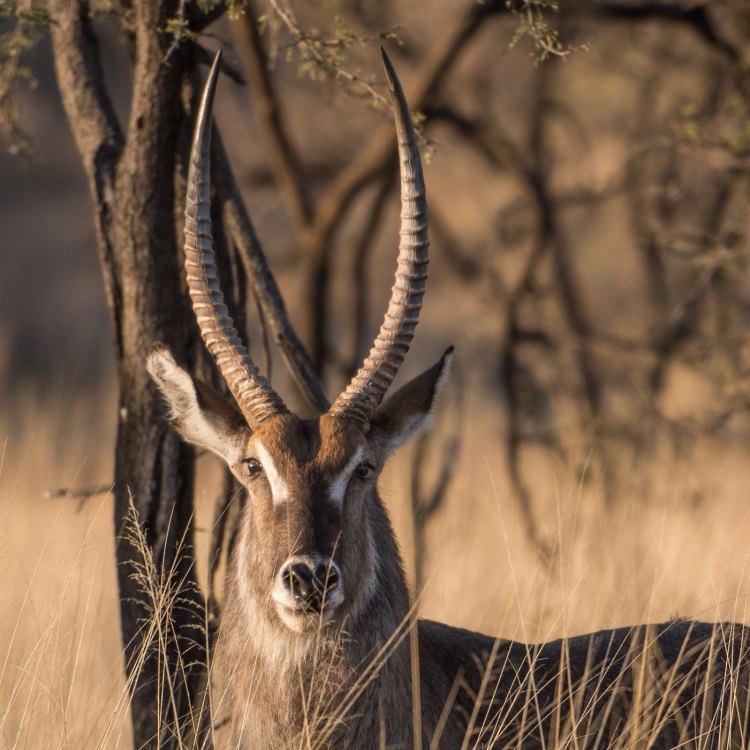
Kobus ellipsiprymnus
The Mighty and Graceful Waterbuck: A Closer Look into This Unique Antelope Species
In the grasslands and savannas of sub-Saharan Africa, a magnificent and majestic antelope roams freely, known as the waterbuck. With its striking appearance and interesting behaviors, this species has captured the attention of many, from wildlife enthusiasts to scientists and even photographers.The waterbuck (Kobus ellipsiprymnus) is a large antelope found in the various habitats of eastern and southern Africa. They are known for their distinctive features, territorial behavior, and role in the ecosystem PeaceOfAnimals.Com. In this in-depth article, we will take a closer look at the unique characteristics, behaviors, and importance of this fascinating species.
The Physical Characteristics of Waterbuck
The waterbuck is a large antelope, with adult males reaching a length of 140-230cm and standing at a height of 120-150cm at the shoulder. They can weigh anywhere between 200-300kg, making them one of the heaviest antelope species in Africa.One of the most distinctive features of the waterbuck is its long, forward-curving horns. These horns can grow up to 99cm in length, making them an essential defense mechanism against predators. The color of their coat ranges from a reddish-brown to a dark brown, with a white ring on their rump, which gives them their scientific name 'ellipsiprymnus,' meaning "water horse with white buttocks."
A Polygynous and Non-Migratory Species
Waterbucks are a sexually reproducing species, with a polygynous mating system. This means that one male will mate with multiple females during the breeding season. These breeding herds are temporary and disband after mating Water Dragon.Interestingly, waterbucks also have a unique reproductive behavior where the males will perform a display to attract females. They will stand up on their hind legs, stretch their necks, and vocalize loudly, often referred to as "roaring" or "bellowing." This display, combined with the strong smell of their urine, helps to attract females and also warns off rival males.
Unlike other antelope species, waterbucks are non-migratory, meaning that they do not have a specific migration pattern. They tend to stay in the same area or territory, grazing on the available vegetation and only moving when necessary.
Social Groups and Territorial Behavior
Waterbucks are known to be territorial and will defend their home range from any intruders. Male waterbucks will mark their territory by spraying urine onto trees and shrubs, leaving a distinct scent that acts as a warning to other males.Males often form bachelor herds, while females and young form herds of up to 30 individuals. These herds are led by a dominant male and provide safety in numbers from predators.
An Important Role in the Ecosystem
Waterbucks primarily graze on grasses, leaves, and herbs, making them important grazers in their ecosystem. They also play a vital role in seed dispersal as they move between different feeding areas. This helps to ensure the growth and diversity of plants in the savanna ecosystem.Additionally, their dung acts as a natural fertilizer, enriching the soil and promoting plant growth. This makes them an essential part of the ecosystem, helping to maintain a balance between herbivores and vegetation.
Threats and Conservation Status
While waterbucks are currently listed as a species of "Least Concern" on the IUCN Red List, they still face various threats in the wild. Habitat loss due to human activities, such as agriculture and infrastructure development, is a significant threat to their survival. Their sedentary nature also makes them vulnerable to habitat fragmentation and isolation.Waterbucks are also hunted for their meat and sport. While regulated hunting can be sustainable, uncontrolled hunting for bushmeat can significantly impact wild populations. Additionally, they are also vulnerable to predation by large carnivores, such as lions, leopards, hyenas, and crocodiles.
To protect this species, conservation efforts have been put in place, such as protected areas and habitat restoration programs. However, it is essential to continue monitoring their populations and habitats to ensure their survival for future generations.
Human Use of Waterbuck
Unfortunately, due to their large size and attractive horns, waterbucks are also hunted for their meat and as a trophy animal. In some cultures, their meat is considered a delicacy, and their horns are used for traditional rituals.However, sustainable hunting and regulated trade of waterbuck products can provide economic incentives for local communities and create a sense of value in protecting the species. It is crucial to ensure that these activities are well-managed to avoid negative impacts on wild populations.
Interesting Facts About Waterbuck
With its strong and stately appearance, it is no surprise that the waterbuck has several unique and interesting facts. One of the most fascinating is their ability to secrete a strong-smelling substance from their skin when they are under threat. This musky odor acts as a deterrent to predators, making them less likely to be targeted for attack.Waterbucks are also known for their excellent swimming abilities, hence their name "waterbuck." They are often found in areas with a permanent water source, and they have adapted to running in water and can even submerge themselves entirely to escape predators.
Predators of Waterbucks
As mentioned earlier, waterbucks face various predators in the wild, such as lions, leopards, hyenas, and crocodiles. These large carnivores prey on waterbucks as they provide an ample food source, and their sedentary nature makes them easy targets.Crocodiles, in particular, prey on waterbucks as they come to drink at water sources. They can ambush a waterbuck as it enters the water and drag it under, making them a significant threat to this species.
In Conclusion
In conclusion, the waterbuck is a remarkable and majestic antelope species that plays an essential role in the African savanna ecosystem. From its unique physical features to its territorial behavior and crucial role as a grazer and seed disperser, this species is vital to maintaining a balanced ecosystem.While they face threats from habitat loss and hunting, conservation efforts are in place to protect and ensure the survival of this magnificent species. As we continue to learn more about the waterbuck and its importance, it is essential to support these conservation efforts and appreciate the beauty and grace of this unique antelope.
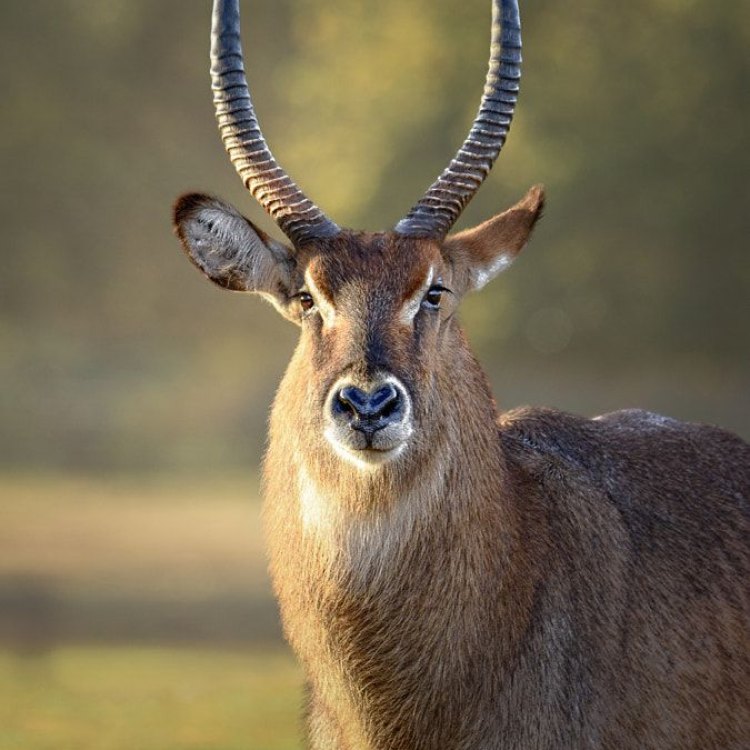
The Magnificent Waterbuck: Adapting to Life in the African Savanna
Disclaimer: The content provided is for informational purposes only. We cannot guarantee the accuracy of the information on this page 100%. All information provided here may change without prior notice.

